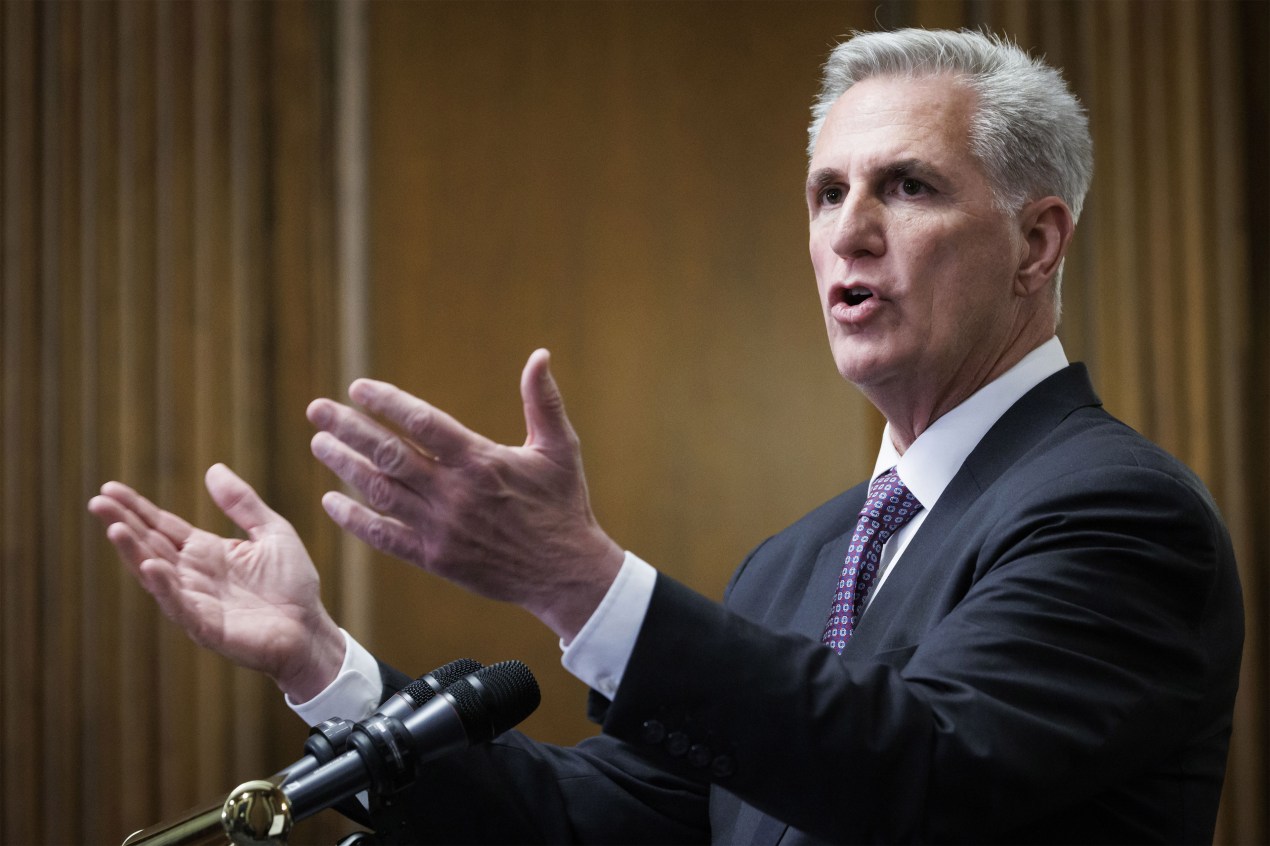[Last UPDATED at 8:30 a.m. ET on June 2]
Policy analysts, Democrats, and Republicans dissatisfied with the deal agree: Federal health programs have dodged a budgetary bullet in the Washington showdown over raising the nation’s debt ceiling.
A compromise bill, approved late Thursday by the Senate, includes some trims and caps on health spending for the next two years.
But the deal spares health programs like Medicaid from the deep cuts approved in April by the Republican-led House. The bill suspends the debt ceiling — the federal government’s borrowing limit — until January 1, 2025, after the next presidential election.
The need for Congress to act to avoid an unprecedented debt default and its rippling economic consequences gave House Republicans leverage to extract spending concessions from Democrats. But in the end the compromise bill, negotiated primarily by House Speaker Kevin McCarthy and Biden administration officials, limits health spending only slightly.
The most conservative Republicans said they are outraged at what they see as a giveaway to Democrats. “It is a bad deal,” said Rep. Chip Roy (R-Texas), one of the bill’s most outspoken opponents, during a news conference at the Capitol. “No one sent us here to borrow an additional $4 trillion to get absolutely nothing in return.”
Besides the spending limits, the main health-related concession made by Democrats is the clawback of about $27 billion in money appropriated for covid-related programs but not yet spent.
Only a portion of the money being reclaimed from covid programs is specifically health-related; money is also being returned to the federal government from programs centered on housing and transportation, for example.
Of the unspent covid funds, according to the Congressional Budget Office, the biggest single rescission is nearly $10 billion from the Public Health and Social Services Emergency Fund. The CDC would have to give back $1.5 billion. But exempted from those health-related givebacks are “priority” efforts such as funding for research into next-generation covid vaccines; long covid research; and efforts to improve the pharmaceutical supply chain.
“The deal appears to have minimal effect on the health sector,” concluded Capital Alpha Partners, a Washington-based policy strategy firm.
That would not have been the case with the House Republicans’ “Limit, Save, Grow Act,” their first offer to raise the debt ceiling and slow — in some areas dramatically — the growth of federal spending. That bill would have reduced the federal deficit by nearly $5 trillion over the next decade, including through more than $3 trillion in cuts to domestic discretionary programs, which account for roughly 15 percent of federal spending. A part of that 15 percent goes to health programs, including the National Institutes of Health, the Centers for Disease Control and Prevention, and the FDA.
The Republican bill would also have imposed nationwide work requirements on the Medicaid health program, a proposal that was vehemently opposed by Democrats in Congress and the Biden administration.
Democrats argued that such requirements would not increase work but rather would separate eligible people from their health insurance for failing to complete required paperwork. That is already happening, according to a KFF Health News analysis, as states begin to trim rolls following the end of the covid public health emergency.
The compromise bill, however, leaves untouched the major federal health programs, Medicare and Medicaid — amounting to a political victory for Democrats, who prioritized protecting entitlement programs. The deal includes no new work requirements for Medicaid.
The bill also freezes other health spending at its current level for the coming fiscal year and allows for a 1% increase the following year. It will be up to the House and Senate Appropriations Committees to determine later exactly how to distribute the funds among the discretionary programs whose spending levels they oversee.
Advocacy groups have argued that even a funding freeze hurts programs that provide needed services to millions of Americans. The result, said Sharon Parrott, president of the liberal Center on Budget and Policy Priorities, “will still be cuts overall in key national priorities when the very real impact of inflation is taken into account.”
Even less happy, however, are conservatives who had hoped the debt ceiling fight would give them a chance to take a much bigger bite out of federal spending.
“Overall, this agreement would continue America’s trajectory towards economic destruction and expanded federal control,” Kevin Roberts, president of the conservative Heritage Foundation, said in a statement.
[Update: This article was updated at 8:10 p.m. ET on June 1, 2023, to reflect news developments.]







